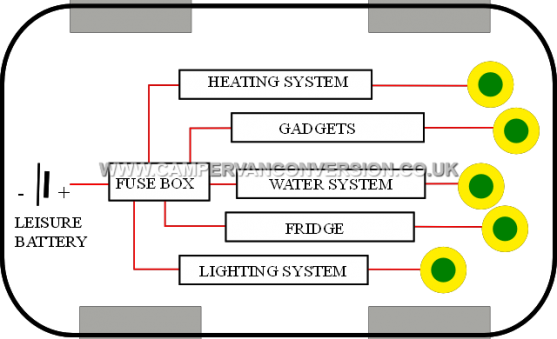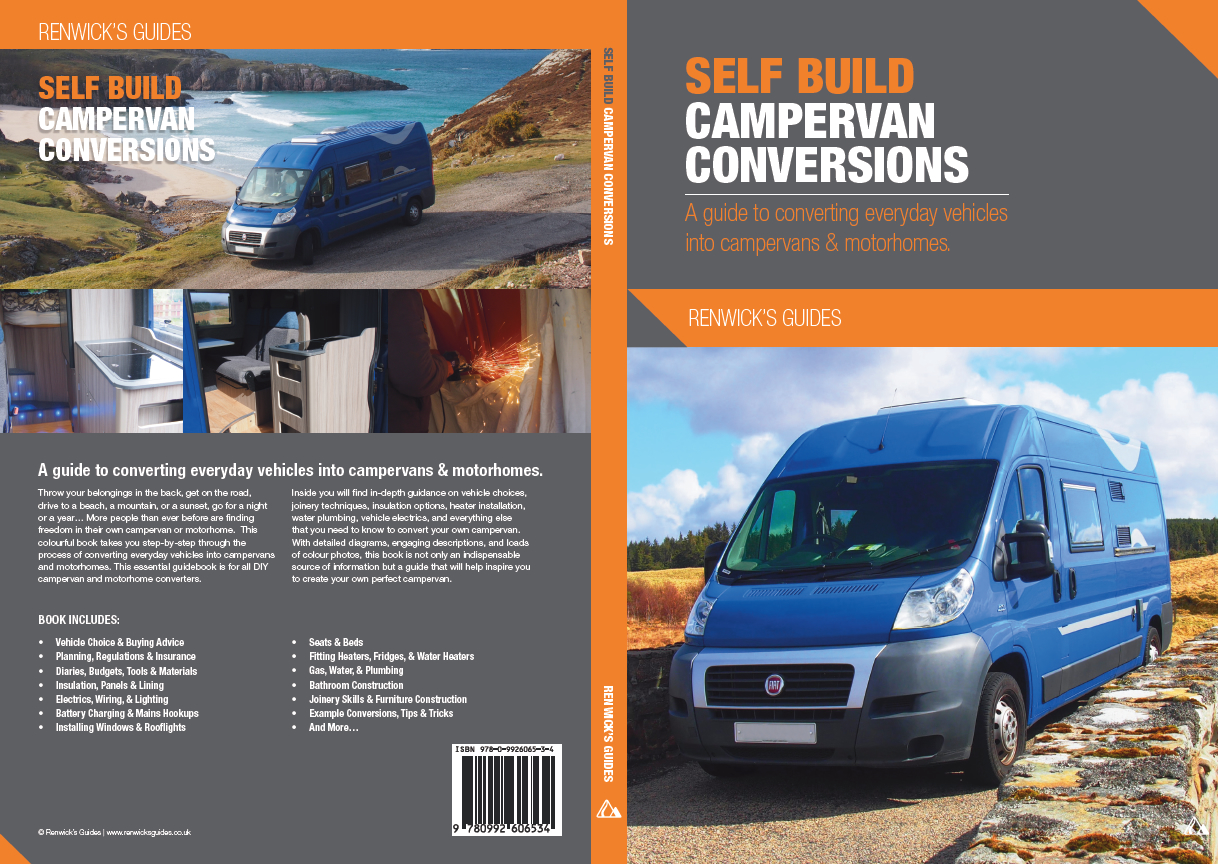4. Charging Leisure Batteries & Split Charge Relays
One of the many ways you can charge your leisure battery is using a split charge relay. However, on modern vans this is more complicated than it used to be, and there are now much better solutions available.
There are three comprehensive chapters on campervan electrics in the new Renwick's Guides book on Self Build Campervan Conversions which is well worth reading for more information than we have here.
Firstly, how does battery charging work - well, essentially your van's alternator charges your starter battery whenever you're driving, and you want to hook your leisure battery up so that it gets charged as well. If all else was equal, all that's really needed to achieve this is a big cable running from the positive terminal of the starter battery to the positive terminal of the leisure battery, plus an earthing cable. At the simplest level, this is all the cable you need to get the alternator to charge the battery.
HOWEVER!!! Unfortunately it's not quite as simple as that, because you want to protect both batteries from getting used at the wrong times. The old school solution to this problem is what's called a 'Split Charge Relay'. With split charge arrangements, the relay control switch is only on when the engine is running, so that the alternator charges the leisure battery while driving; but with the engine off, the van appliances only draw juice from the leisure battery preventing the starter battery from going flat. Usually the split charge relay's control switch is an 'ignition switched source' such as the alternator charge warning light. On older vans, fitting split charge relays was fairly simple, but on modern vehicles there are better solutions available with much simpler wiring as well as greatly improved charging performance, not to mention improved safety.
The more modern the vehicle, in general the more complex the wiring and the more powerful the alternator. This means that on many modern vehicles the old DIY solution of a split charge relay becomes ALOT more complicated. It's harder to find the right wires to get the ignition-switched relay source, and because modern alternators can be much more powerful the wires involved can need to be much thicker. There is also an increasing trend towards 'intelligently managed' charging systems - cobbling together a simple split charge system on top of a complex modern wiring setup might well not work quite as you intended it to!
There are various solutions, but our favourite is a new breed of charging systems that make putting together your campervan and motorhome electrics far simpler, better, and safer - these issues and many more are discussed in much more detail in the new book on Self Build Campervan Conversions which was written in collaboration with us here.








